The EVGA GeForce GTX 1060 3GB graphics card is a brand new and slightly cut-down version of the GTX 1060 6GB card making it a great choice for playing games at 1920×1080. This $199 entry-level EVGA GTX 1060 3GB card is powered by Nvidia’s Pascal architecture and it is a competitor to the $199 PowerColor Red Devil RX 470 on AMD’s new Polaris architecture. As a competitor in this 200 dollar price range, the GeForce GTX 1060 3GB promises excellent performance for virtual reality and for high performance HD gaming.
We reviewed the $259 EVGA GTX 1060 SC 6GB video card recently and it received BTR’s “Good Value” award as best in its class when we compared it to the $299 GTX 1060 Founders Edition and we also put it against the $239 (and up) AMD RX 480. It is an excellent value for gamers looking to max out their games at 1920×1080 and at even higher resolutions. Now we see a new EVGA GTX 1060 3GB card that is priced $60 to $100 below the 6GB version costs while offering many of the same features.
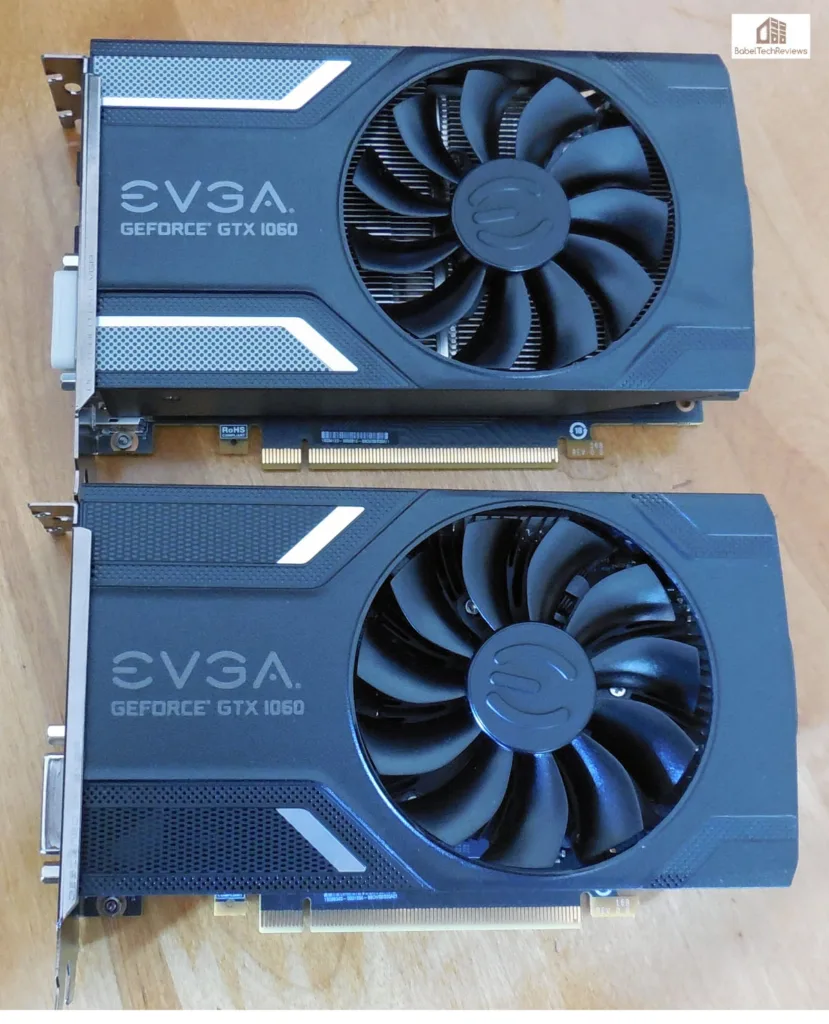
These new 3GB GTX 1060 cards also feature EVGA ACX cooling technology. EVGA ACX runs cooler and more quietly than the Founders Edition.
The $199 EVGA GeForce GTX 1060 3GB vs. the $199 PowerColor Red Devil RX 470
The EVGA GeForce GTX 1060s are quite small when compared with their competitors, the PowerColor Red Devil RX 470 and the RX 480. One or two fans serves the GTXes whereas the Polaris RX 4x0s use two or three fans. The EVGA GeForce GTX 1060 3GB is an excellent choice for the HTPC or small form factor PC enthusiast.
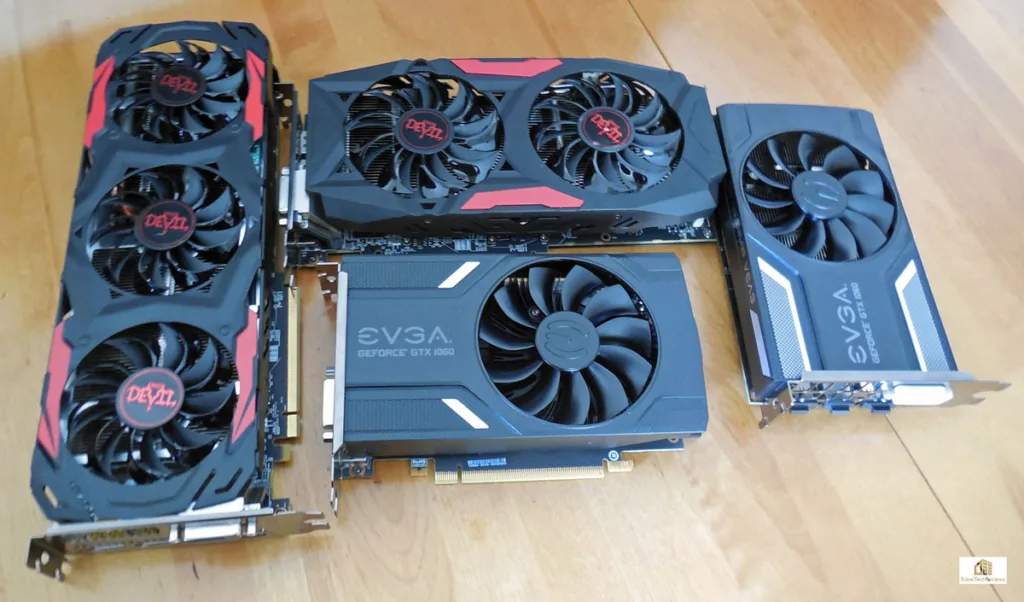
For a recap of Nvidia’s Pascal architecture see our GTX 1060 Founders Edition launch article. This evaluation is focused on performance, and we will compare the EVGA GTX 1060 3GB against the 6GB Founders Edition of the GTX 1060 and against the reference and Red Devil RX 470. We will also compare the performance of 11 video card configurations including the GTX 970 OC, the GTX 960 OC, the 280X, and the RX 480 to try to determine if the GTX 1060 3GB is held back by its having only 3GB of vRAM.
The EVGA GTX 1060 3GB Gaming Edition
The EVGA GeForce GTX 1060 3GB video card featuring EVGA ACX 2.0 cooling arrived with a retail price of $199.
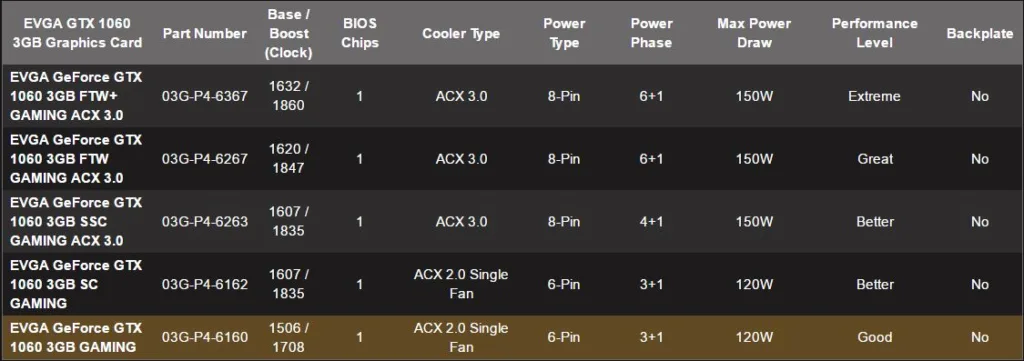 This EVGA GTX 1060 3GB Gaming is clocked the lowest of the five GTX 1060 3GB EVGA models which range in price from $199 to 259. It has a basic 3+1 Power Phase design and it uses a single 6-pin PCIe connector compared with the more expensive models which feature more robust power delivery with an 8-pin PCIe connector and better cooling systems.
This EVGA GTX 1060 3GB Gaming is clocked the lowest of the five GTX 1060 3GB EVGA models which range in price from $199 to 259. It has a basic 3+1 Power Phase design and it uses a single 6-pin PCIe connector compared with the more expensive models which feature more robust power delivery with an 8-pin PCIe connector and better cooling systems.
All EVGA GTX 1060 3GB cards feature ACX fan technology with optimized swept blades, double ball bearings and a low-power motor that delivers more air flow with less power, unlocking additional power for the GPU. The fan will even shut down when the card is not under load.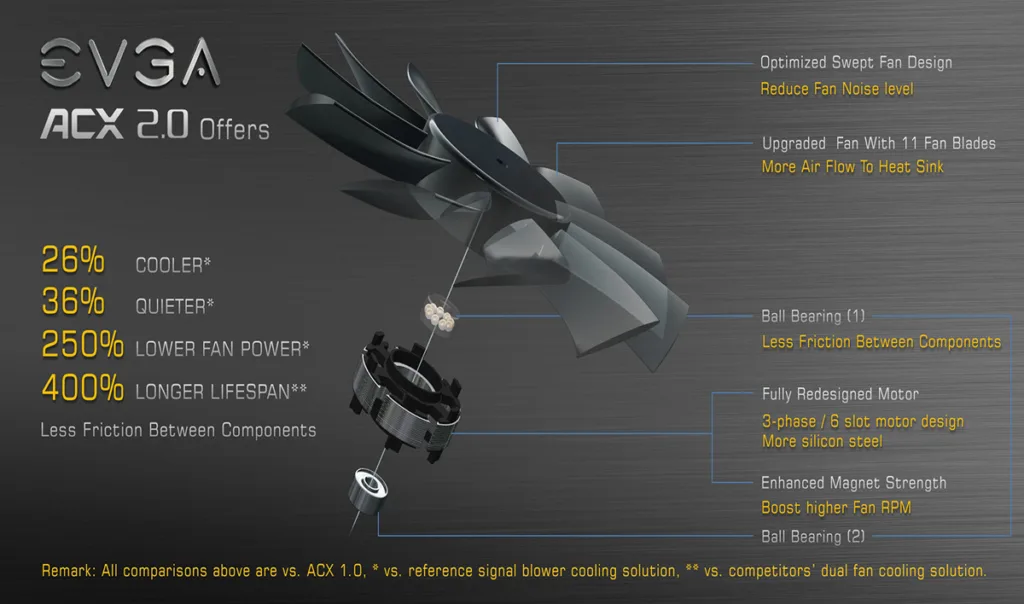
Features of EVGA’s GeForce GTX 1060 3GB Gaming Edition:
A major difference between the the GTX 1060 6GB and the 3GB GPUs, besides the amount of vRAM, is that the 1152 CUDA cores in the 3GB version is cut down from the 6GB version’s 1280 CUDA cores.
It is interesting to see that Nvidia did not choose “Ti” as the designation for the GTX 1060 6GB to probably keep their future options open, nor did they use a suffix such as “LE”, or even choose a “GTX 1055” naming for their entry level GTX 1060. Rather, Nvidia choose 3GB as the only way to differentiate a cut down 1060 with half the vRAM from the original GTX 1060 6GB. The Boost/base core and memory speeds are the same as is the amount of memory bandwidth so there should not be too much performance difference.
You can find out much more here. Here are the specifications and the details for the EVGA GTX 1060 3GB Gaming edition.
Here are the specifications for the reference Founders Edition of the GTX 1060 6GB: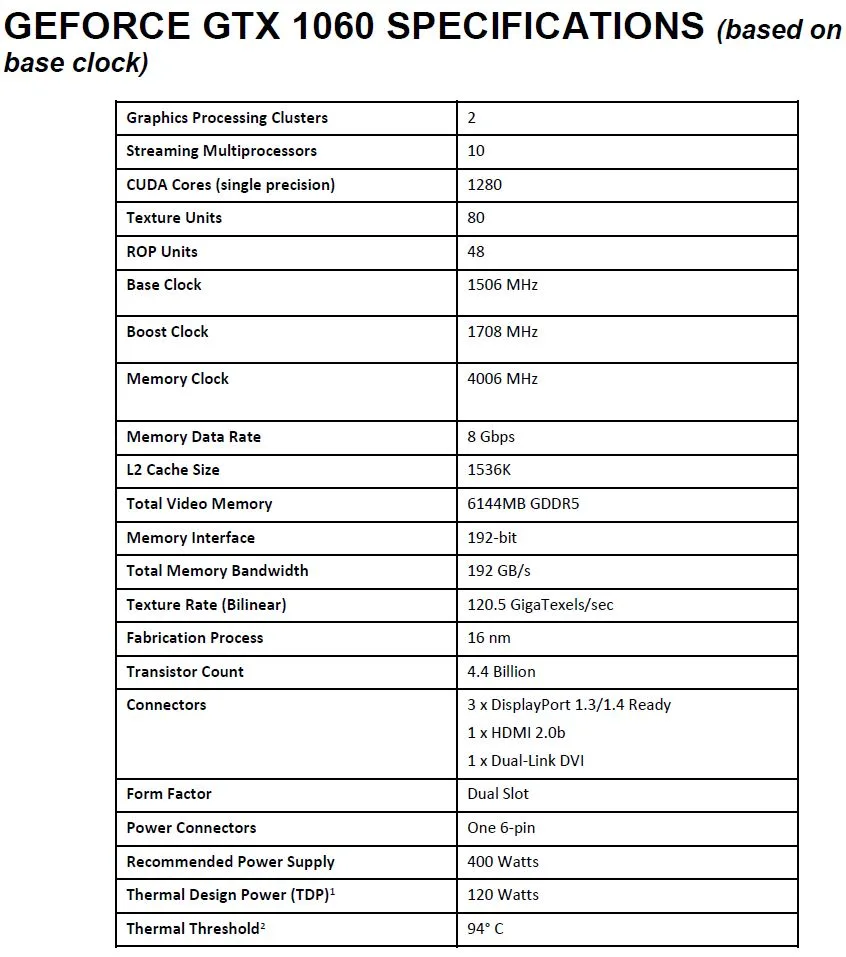
The EVGA GTX 1060 3GB’s card’s base clock is 1506MHz and boost clock is 1708MHz. The boost we actually got first rose up to 2025MHz when a game would first start but would stabilize as the GPU temperature increased to around 1822MHz, or 114MHz higher than the guaranteed Boost for this entry level GTX 1060 3GB. Since the GDDR5 memory is not further overclocked by EVGA, we found that we gained some impressive performance by overclocking the memory clocks +400MHz, to 4404MHz.
From what we can see, the specifications of the EVGA GTX 1060 3GB Gaming Editon are impressive for a $200 video card, and our sample clocked higher than the guaranteed clocks.
Our EVGA GTX 1060 3GB Gaming Edition came directly from EVGA to BTR as a sample, last Monday. EVGA wants to make it very clear that what they sent us is the same as what you can buy from any etailer. EVGA sent out this press release:
EVGA was one of the first graphics card companies to offer overclocked graphics cards, and since day one EVGA always delivered the exact same products to reviewers as well as customers. EVGA does not “fake” reviews or send out products with “tweaked” clockspeeds to reviewers. With EVGA Superclocked, FTW and Classified graphics cards, what you see is what you get.
Buyers are covered by EVGA’s 3-year warranty with a further warranty extension available upon registration within 90 days of purchase.
EVGA PrecisionX OC Unlocks automatic overclocking
Our preliminary overclock appears to be stable and it looks pretty good so far, and we will follow up this evaluation with an overclocked-to-the-max EVGA GTX 1060 3GB versus the Red Devil manually overclocked to the max RX 470 4GB to see which one ultimately delivers the highest performance.
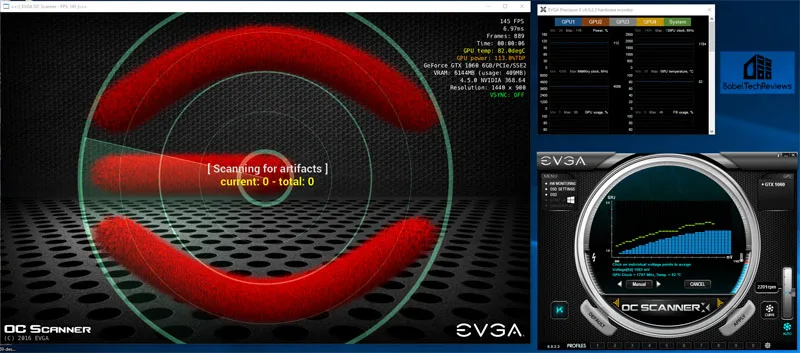 The EVGA PrecisionX OC works with Pascal architecture and now combines manual and automatic overclock tuning features to give the end user more options.
The EVGA PrecisionX OC works with Pascal architecture and now combines manual and automatic overclock tuning features to give the end user more options.
Includes Exclusive Features for EVGA GeForce GTX 1060 3GB:
- DirectX 12 OSD Support – See the on screen display on DirectX 12 games.
- EVGA OC ScannerX Integration – Automatically find your optimal voltage/frequency curve!
- K-Boost Function – Maximize your clocks with this exclusive feature.
Learn more here.
Our Big Picture Test bed of Competing Cards
Our testing platform is Windows 10 Home 64-bit, using an Intel Core i7-6700K at 4.00GHz which turbos to 4.4GHz for all cores as set in the ASRock Z7170 motherboard’s BIOS, and 16GB of G.SKILL DDR4 at 3000MHz. The settings and hardware are identical except for the drivers being tested.
We test 25 games and 2 synthetics featuring our newest 2016 games, Mirror’s Edge Catalyst and Deus Ex Mankind Divided, and we are also including Ashes of the Singularity, Hitman, Total War Warhammer, and Rise of the Tomb Raider using DX12. We have also added Futuremark’s DX12 benchmark, Time Spy, and will compare gaming performance with maximum settings at 1920×1080 and at 2560×1440 resolutions.
This evaluation will pit the stock EVGA GTX 1060 3GB Gaming edition against the stock and reference-clocked GTX 1060 6GB, and also against the PowerColor factory overclocked RX 470. Our bigger picture will further compare performance with the GeForce GTX 1070, the GTX 970 EXOC, the GTX 960 OC, and the PowerColor 280X, as well as versus the reference and Red Devil RX 480.
Let’s take a closer look at the new EVGA GTX 1060 3GB Gaming Edition.
Unboxing the EVGA GTX 1060 3GB Gaming Edition
The EVGA GTX 1060 SC comes in a small box that advertises EVGA is Nvidia’s No. 1 seller in the USA. The box features the GTX 1060’s 3GB GDDR5, and that it is ready for VRWorks/GameWorks/G-SYNC/DX12.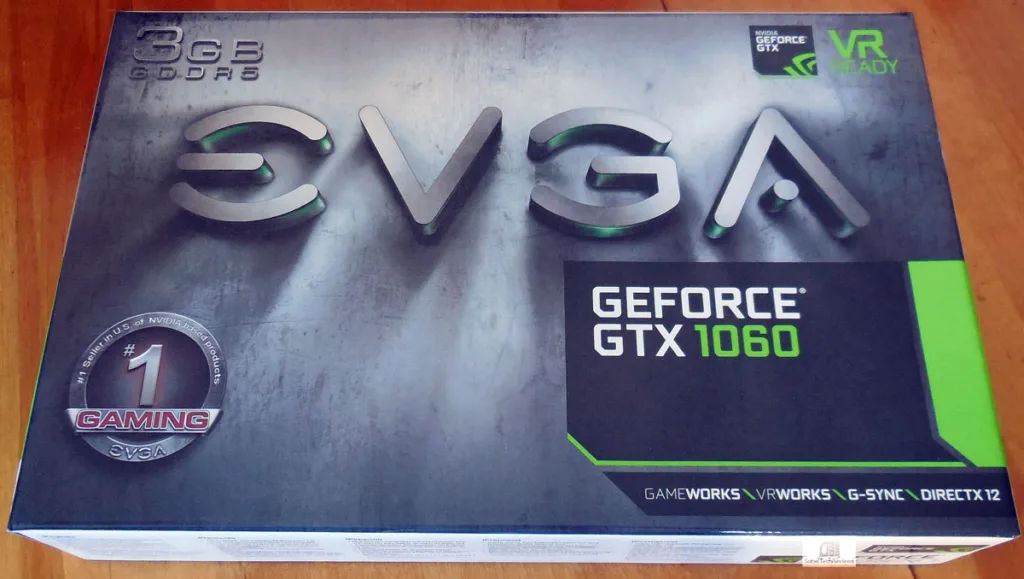 The sides and back of the box are printed in several languages that advertise its key features, as well as emphasize the EVGA warranty and PrecisionX OC.
The sides and back of the box are printed in several languages that advertise its key features, as well as emphasize the EVGA warranty and PrecisionX OC.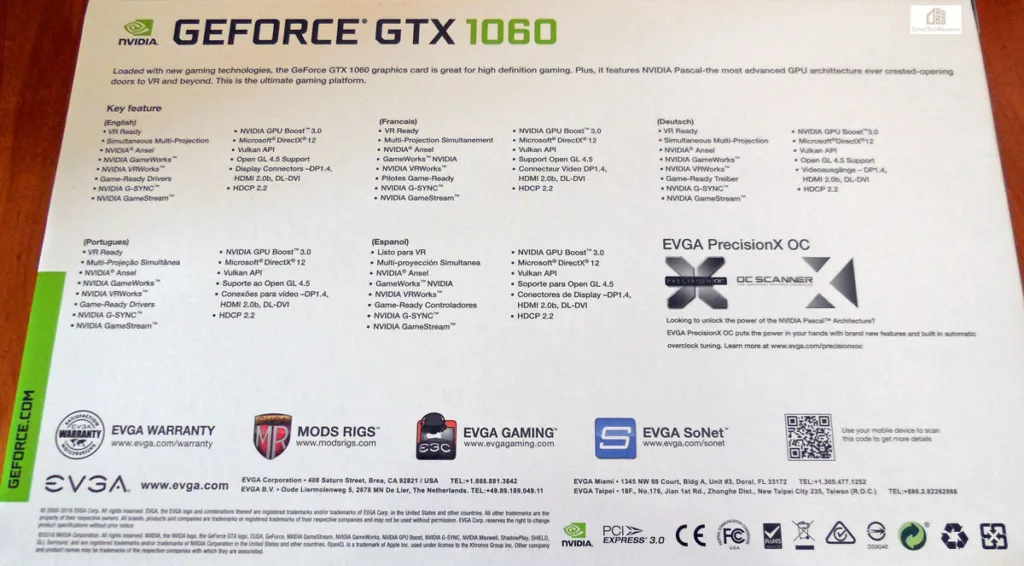
Here is everything out of the box.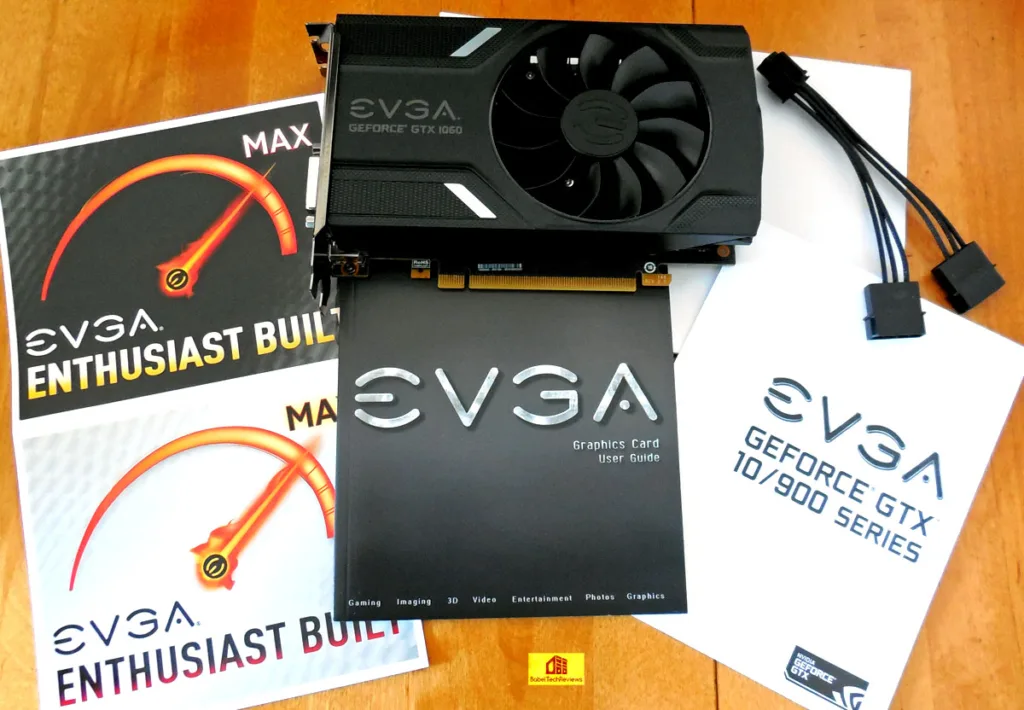 The card is packed securely and it comes in an anti-static bag. It comes with two large stickers, a user and an installation guide, and a very large “Arm Yourself with EVGA” poster (not shown opened). Also included is a dual molex to 6-pin PCIe cable.
The card is packed securely and it comes in an anti-static bag. It comes with two large stickers, a user and an installation guide, and a very large “Arm Yourself with EVGA” poster (not shown opened). Also included is a dual molex to 6-pin PCIe cable.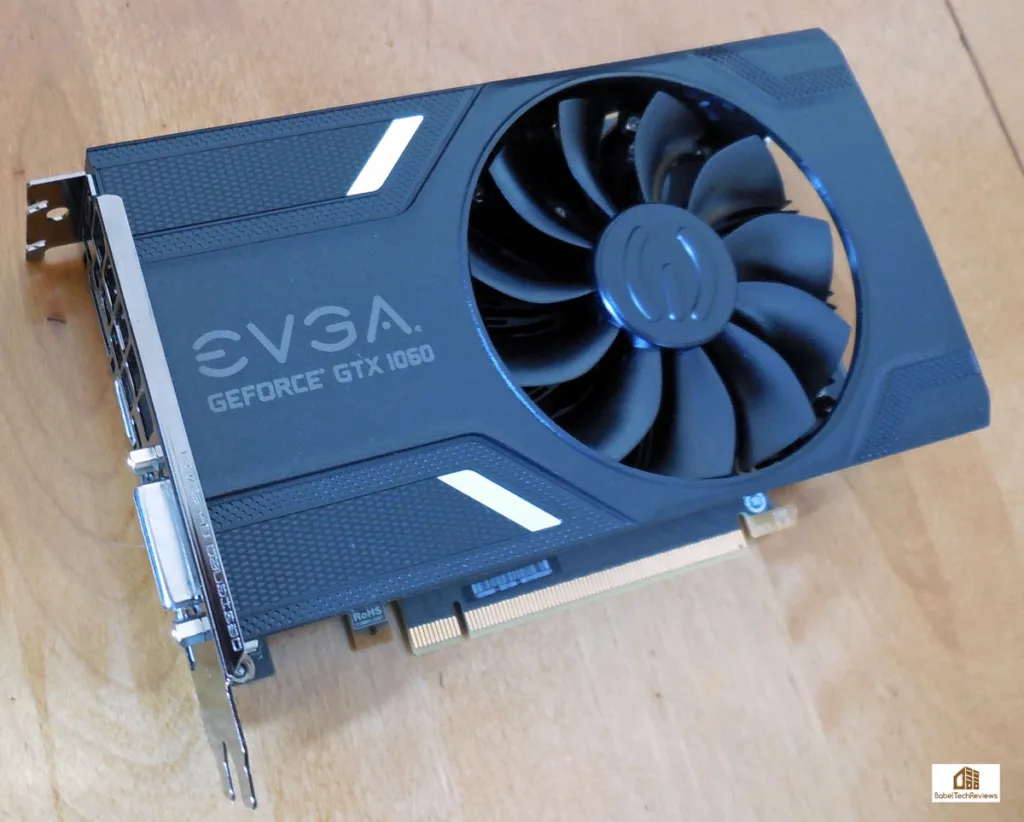
The EVGA GTX 1060 SC is a handsome short single-fan card that covers a heatsink and radiator. The large fan spins relatively slowly compared with the reference Founders Edition version’s blower. A slower-turning ACX 2.0 fan will remove the GPU heat better and more quietly, compared with a double speed single blower-style fan used in the reference version. The ACX 2.0 fan is reasonably quiet until it is turned above 90% when it gets an annoying whine. Of course, it should never be run this high except for overclocking runs.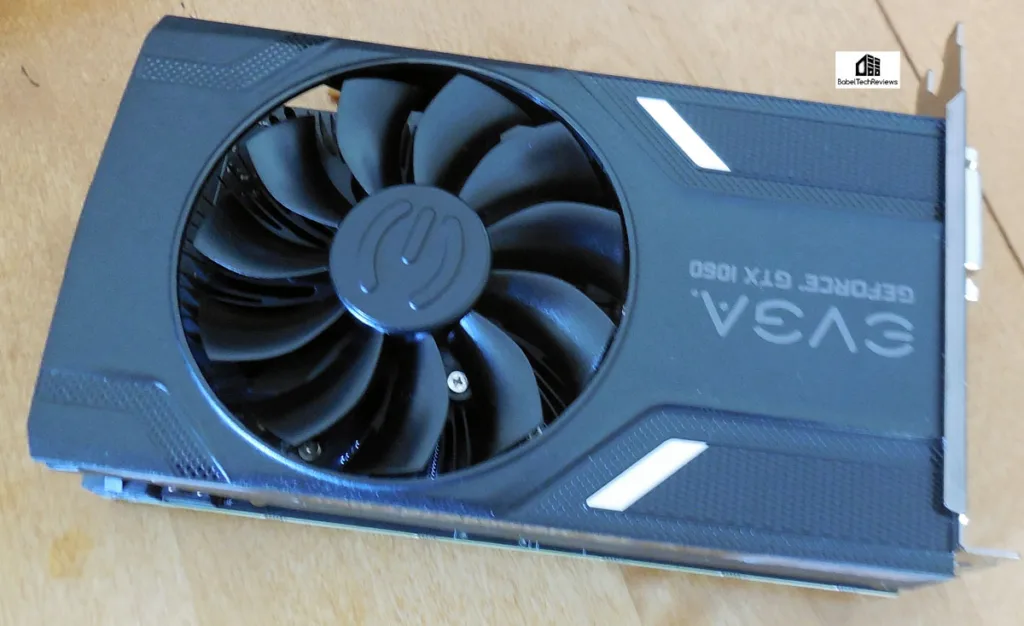
We turn the card on its edge and look at the slim design cooling fins which allow the card to fit into a PC motherboard’s double slot configuration. The heatsink area is quite large for a very small card. Besides the power from the PCIe slot, there is one 6-pin connector.

None of EVGA’s GTX 1060 3GB video cards have a backplate.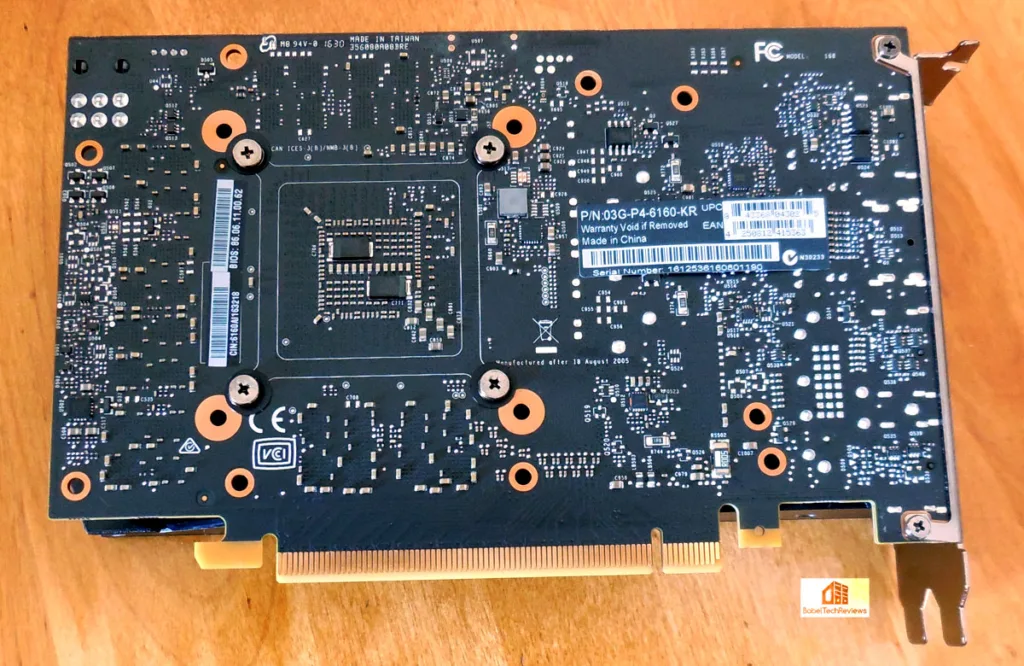
Here is the connector panel.There are one dual link DVI port, 3 Display Ports and a HDMI 2.0 port. The EVGA GTX 1060 3GB comes with covers for the connectors.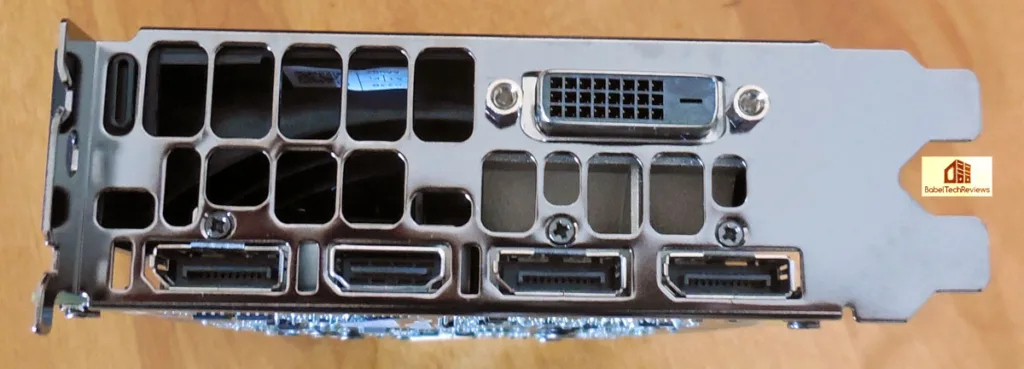
The EVGA GTX 1060 3GB is a handsome small card and the specifications look very good. Let’s check out its performance versus the GTX 1060 6GB Founders Edition and also versus the RX 470 after we look over our test configuration on the next page.
Test Configuration – Hardware
- Intel Core i7-6700K (reference 4.0GHz, HyperThreading and Turbo boost is on to 4.4GHz; DX11 CPU graphics).
- ASRock Z7170M OC Formula motherboard (Intel Z7170 chipset, latest BIOS, PCIe 3.0/3.1 specification, CrossFire/SLI 8x+8x)
- G.Skill Ripjaws V 16GB DDR4 (2x8GB, dual channel at 3000MHz)
- EVGA GTX 1060 3GB Gaming Edition ACX, EVGA clocks, supplied by EVGA
- EVGA GTX 1060 6GB, at Founders Edition stock clocks, supplied by EVGA
- GTX 1070 8GB, Founders Edition, stock clocks, supplied by Nvidia
- RX 480 8GB, Diamond reference version, at stock clocks
- PowerColor Red Devil RX 470 4GB, at reference stock and at PowerColor factory clocks, supplied by PowerColor
- GALAX GTX 970 EXOC, 4GB, GALAX clocks, supplied by GALAX
- ASUS Strix GTX 960 OC, 2GB, ASUS clocks, supplied by ASUS
- PowerColor R9 280X, 3GB, reference clocks, supplied by PowerColor
- Two 2TB Toshiba 7200 rpm HDDs for each platform
- EVGA 1000G 1000W power supply unit
- Thermaltake Water2.0, supplied by Thermaltake
- Onboard Realtek Audio
- Genius SP-D150 speakers, supplied by Genius
- Thermaltake Overseer RX-I full tower case, supplied by Thermaltake
- ASUS 12X Blu-ray writer
- Monoprice Crystal Pro 4K
Test Configuration – Software
- Nvidia’s GeForce WHQL 372.54 used for all of the EVGA GTX 1060s. GeForce 368.64, GTX 1060 launch drivers (identical in performance to the public WHQL 368.81) were used for the rest of the Nvidia cards. High Quality, prefer maximum performance, single display.
- AMD Crimson Software 16.8.1 and 16.8.2 (identically performing) drivers were used for benching AMD cards.
- VSync is off in the control panel.
- AA enabled as noted in games; all in-game settings are specified with 16xAF always applied
- All results show average frame rates including minimum frame rates shown in italics on the chart next to the averages in smaller font.
- Highest quality sound (stereo) used in all games.
- Windows 10 64-bit Home edition, all DX11 titles were run under DX11 render paths. Our four DX12 titles are run under the DX12 render path. Latest DirectX
- All games are patched to their latest versions at time of publication.
- Crimson Software’s WattMan was used for the RX 480 and the RX 470 to set the Power Limits to maximum.
- EVGA’s Precision XOC, reviewer’s version 6 used for Nvidia cards to set the overclock and the Power/Temp targets to maximum.
- Unigine Heaven 4.0 was used to set preliminary overclocks
Synthetic
- Firestrike – Ultra & Extreme
- Time Spy DX12
- Crysis 3
- Metro: Last Light Redux (2014)
- Middle Earth: Shadows of Mordor
- Alien Isolation
- Dragon’s Age: Inquisition
- Dying Light
- Grand Theft Auto V
- ProjectCARS
- the Witcher 3
- Batman: Arkham Origins
- Mad Max
- Fallout 4
- Star Wars Battlefront
- Assassin’s Creed Syndicate
- Just Cause 3
- Rainbow Six Siege
- DiRT Rally
- Far Cry Primal
- Tom Clancy’s The Division
- DOOM (*OpenGL for Nvidia Cards)
- Mirror’s Edge Catalyst
- Deus Ex Mankind Divided
DX12 Games
- Ashes of the Singularity
- Hitman
- Rise of the Tomb Raider
- Total War: Warhammer
Nvidia’s Control Panel settings:
Here are the settings that we always use in AMD’s Crimson Control Center for our default benching. The Power Efficiency Toggle is left off in our benching.
Calculating Percentages
There are two methods of calculating percentages. One is the “Percentage Difference” that we are using to compare the GTX 1060 3GB versus the 6GB version and also versus the Red Devil RX 470, and the other is “Percentage Change” which we us to show the improvements of an overclocked card versus stock performance.
For the percentage difference we are simply dividing the difference between two numbers by the average of the two numbers. This is usually expressed algebraically where “V” equals value: ( | V1 – V2 | / ((V1 + V2)/2) ) * 100
Let’s head to the performance charts to primarily see how the stock EVGA GTX 1060 3GB Gaming edition compares with the PowerColor Red Devil RX 470 and with the stock-clocked GTX 1060 6GB card, as well as compared with our other cards in the test bed.
Overclocking the EVGA GTX 1060 3GB Gaming Edition ACX 2.0
We did not run the overclocked benchmarks of the EVGA GTX 1060 3GB Gaming edition yet. We will follow up this week with an overclocked evaluation versus the overclocked Red Devil RX 470. Overclocking the Pascal GTX 1060s are not as quite easy as overclocking Maxwell architecture-based cards. We already overclocked the Founders Edition of the GTX 1060 with PrecisionX OC and you can read about methods and our results here.
We learned that experienced overclockers won’t want to bother with the PrecisionX OC scanner at all – except perhaps to rough in a quick overclock as a starting point. The main thing to remember if want as high an overclock as possible is to turn the voltage up to maximum, set the fan profile to “aggressive” or to 100%, and go from there.
You also need to remember that Pascal overclocking is highly temperature dependent. Keep your GPU cool and you will max out your overclock. Adding voltage is secondary – it only moves the limit up a bit – as the GPU’s BIOS controls it automatically, and it is best used to stabilize a marginal overclock.
These are the clocks that we get just above idle with everything set completely to stock with the Power/Temp Targets set to maximum. Notice that the fan shuts off when there is no load.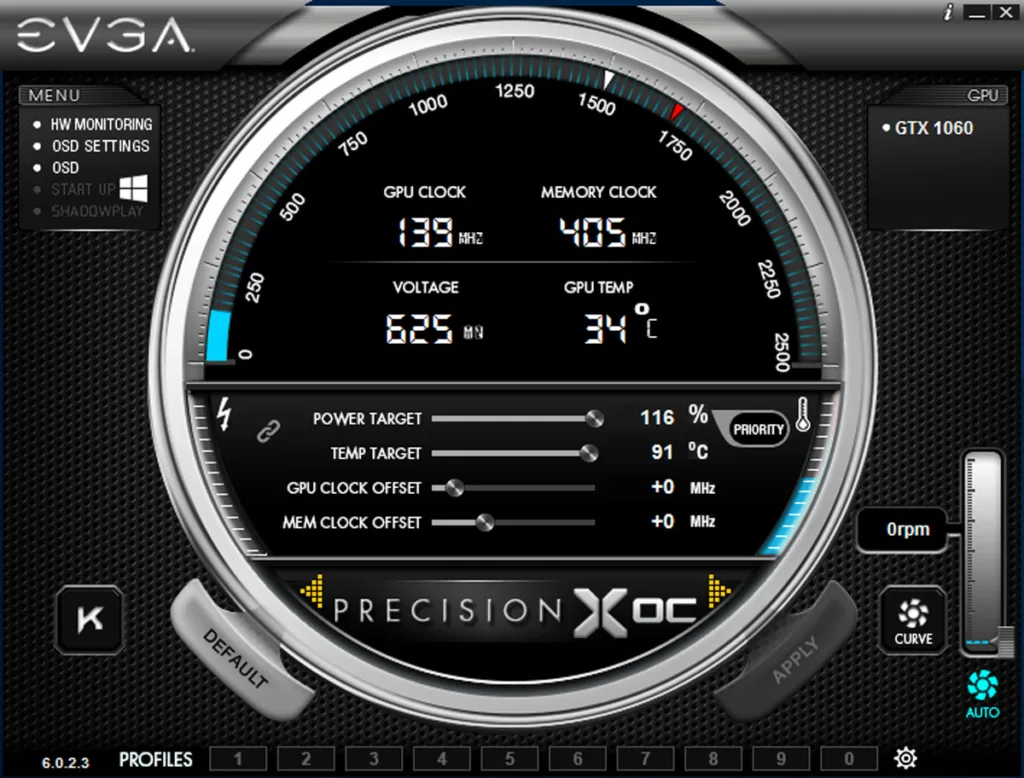
These are the results of looping Heaven 4.0 at completely stock settings. The GPU clock boosts to 1809MHz.
Now we move the Power/Temp Targets to their maximum. As you can see, the Boost 3.0 only moves up a single increment to 1822MHz . The Power/Temp targets whether at maximum or at default make little performance difference to the low TDP GTX 1060. Temperatures stay at or below 81C with the stock fan profile and the ACX 2.0 fan is very quiet.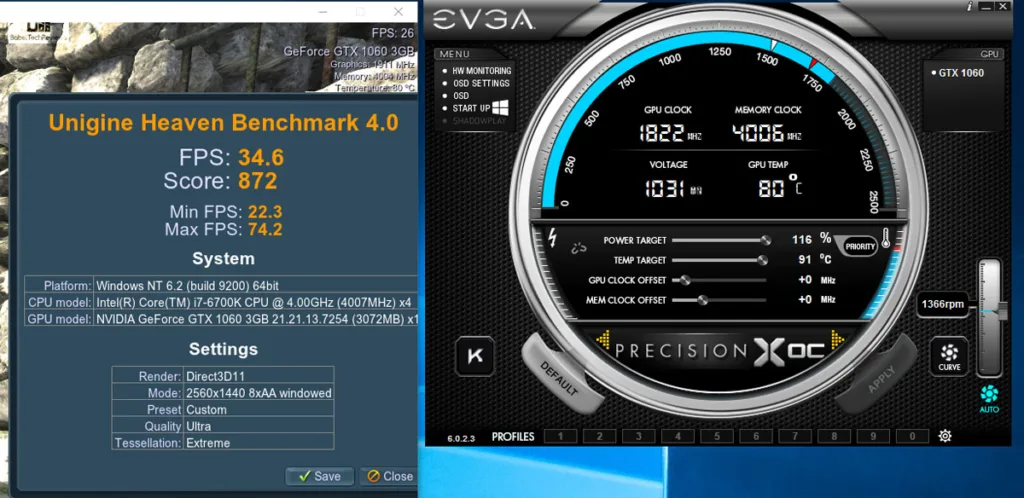
After spending hours incrementally overclocking our EVGA 1060 3GB we settled on our maximum overclock. The EVGA GTX 1060 3GB’s card’s guaranteed base clock is 1506MHz and its boost clock is 1708MHz. The boost we actually got first rose up to 2025MHz when a game would first start but would stabilize as the GPU temperature increased to around 1822MHz, or 114MHz higher than the guaranteed Boost for this entry level GTX 1060 3GB. Our preliminary stable over clock is +125MHz offset to the core for a minimum boost that fluctuates between 1974MHz and 1987MHz.
Since the GDDR5 memory is not further overclocked by EVGA, we found that we gained some impressive performance by overclocking the memory clocks +400MHz, to 4404MHz. These are the preliminary clocks that we set for our EVGA GTX 1060 3GB and we shall follow up with its performance results versus the overclocked Red Devil RX 470 in the next evaluation.
You can download PrecisionX directly here where you can download it for free.
Lets see how the EVGA GTX 1060 3GB compares with the GTX 1060 6GB Founders Edition, with the Red Devil RX 470, and with other competing cards of Summer, 2016.
Performance summary charts
Nvidia’s WHQL driver 372.54 was somewhat problematic for the GTX 1060 3GB. We originally had difficult installing it and had to install an older version (368.64) first so that it would recognize our hardware. Also, in two games – Rise of the Tomb Raider and in Assassin’s Creed Syndicate – we had issues with the performance that appeared to be related to memory management, and are we showing the results of the older drivers for those two games on the following charts. Very often we would notice that even at 1920×1080, the video memory was maxed out very close to the 3GB limit. And this morning, Nvidia has released brand new drivers, WHQL 372.70 which hopefully address our issues.
The EVGA GTX 1060 3GB vs. the GTX 1060 Founder’s Edition & vs. the Red Devil RX 470
All results except for Firestrike are expressed in average fps (in Bold) and also generally in minimum fps (where they make sense, in smaller font italics next to the averages).
The stock EVGA GTX 1060 3GB performance results are in Column 1 and the GTX 1060 6GB at Founders Edition reference clocks performance results are in the second column. The third column shows the performance deficit of the 3GB version (marked with a minus “-” sign) compared with the 6GB version, and the fourth column shows the Red Devil RX 470 results. The fifth column shows the performance difference between the EVGA GTX 1060 3GB and the PowerColor RX 470 (with Red Devil “wins” in red and marked with a minus “-” sign).
As you can see, the stock-clocked EVGA GTX 1060 3GB is around 5-10% slower than the reference GTX 1060 6GB version with several considerably higher deficits where the more limited 3GB of vRAM probably makes a difference, especially at 2560×1440 resolution.
The $199 stock clocked EVGA GTX 1060 3GB is overall faster than the $199 PowerColor Red Devil RX 470. In fact, out of 50 individual game benchmarks, the Red Devil RX 480 only wins 14 benchmarks.
The main summary chart: The Big Picture
This main summary chart is what we call, “The Big Picture” since it places our three main test cards into a much larger 11-configuration test bed. Driver revisions for each card are noted on the chart; GTX 1060 368.64 launch drivers are the performance equivalent of the WHQL 368.81 public release drivers. An “X” means the benchmark was not run. All results except for Firestrike and Time Spy are expressed in average fps (in Bold) and also generally in minimum fps (where they make sense, in smaller italics next to the average results).
Make sure to open this chart in another window or in a separate tab for better readability.
It is interesting to see the EVGA GTX 1060 3GB trade blows with the more expensive RX 480. It is also faster than the overclocked GTX 970, and it absolutely blows away the last generation GTX 960 OC and the 280X.
Let’s head for our conclusion.
The Conclusion
We have no trouble giving a big recommendation to the EVGA GTX 1060 3GB Gaming Edition with ACX 2.0. At $199 it is small, it looks great, runs cool and it is very quiet, and its out of the box performance is higher than the competing Red Devil RX 470 for the same $199 price. It wins more than two-thirds of our benchmarks.
The only issue that we can see is that you ideally want this 3GB card for 1920×1080 resolution. Higher resolutions tend to expose the 3GB of video memory as being rather limited, and in many games we saw that its entire amount of vRAM was being used continuously. Nvidia’s drivers manage this memory very well but we cannot recommend this card for 2560×1440 like we can for the 6GB version. If you play at 1920×1080 the $60 savings over the 6GB version may be worth it. If you have plans to upgrade your display, you will do better with a larger capacity vRAM card.
EVGA GTX 1060 3GB Pros
- The EVGA GTX 1060 3GB beats the Red Devil RX 470 overall in performance at a similar price.
- With one 6-pin PCIe connector, TDP and power draw are good and it is quiet in comparison to the reference GTX 1060 Founders Edition. ACX 2.0 cooling is very effective for this card.
- Overclockability is excellent out of the box – GPU Boost 3.0 works as advertised.
- The card is well-built, looks great and fits into a smaller space than competing cards.
- The GeForce Experience and GameWorks, including ShadowPlay, enhance the gaming experience. G-SYNC helps to smooth gaming framerates by syncing the display to the GPU and it allows for smooth framerates without stuttering or tearing.
- EVGA has excellent support and a 3-year warranty.
Cons
- The video memory at 3GB limits the GTX 1060 to 1920×1080 resolution.
 The Verdict:
The Verdict:
- If you are buying a fast video card right now and looking for good performance for a better than entry-level VR or for maxed out 1920×1080, the EVGA GTX 1060 3GB is an excellent choice. The GTX 1060 beats its competition the reference or factory-overclocked RX 470s, it overclocks better, and it uses less power.
- We would choose the EVGA GTX 1060 3GB for 1920×1080 gaming and save $60 over the 6GB version. For higher resolutions, pick the 6GB card.
- We would like to award the EVGA GTX 1060 3GB BTR’s Great Value Award.
We do not know what the future will bring, but the EVGA GTX 1060 3GB brings an excellent performer to the Pascal GeForce family and it clearly establishes itself as an excellent value for 1920×1080 gaming. On top of this, the $199 EVGA GTX 1060 3GB is highly recommended for its excellent cooling and quietness as well as for the great EVGA warranty and support.
If you currently game on an older generation video card, you will do yourself a big favor by upgrading. The move to a GTX 1060 will give you better visuals on the DX11 and DX12 pathways and the GTX 1060 3GB is faster than the RX 470 and it overclocks better according to our preliminary overclock. And we will follow this evaluation up with the overclocked evaluation.
AMD offers their own set of features including Vulkan, Eyefinity 2.0, and FreeSync, but their Polaris RX 470 as represented by the Red Devil card, simply cannot match the DX11 performance of the GTX 1060 at stock clocks.
Stay tuned, there is a lot coming from us at BTR. We are going to overclock our PowerColor Red Devil RX 470 and RX 480 this week, and we will also bring you the overclocking rematches versus the EVGA GTX 1060s. We will also test the performance of Nvidia’s 372.72 WHQL drivers which came out this morning.
Happy Gaming!
Mark Poppin
BTR Editor-in-Chief
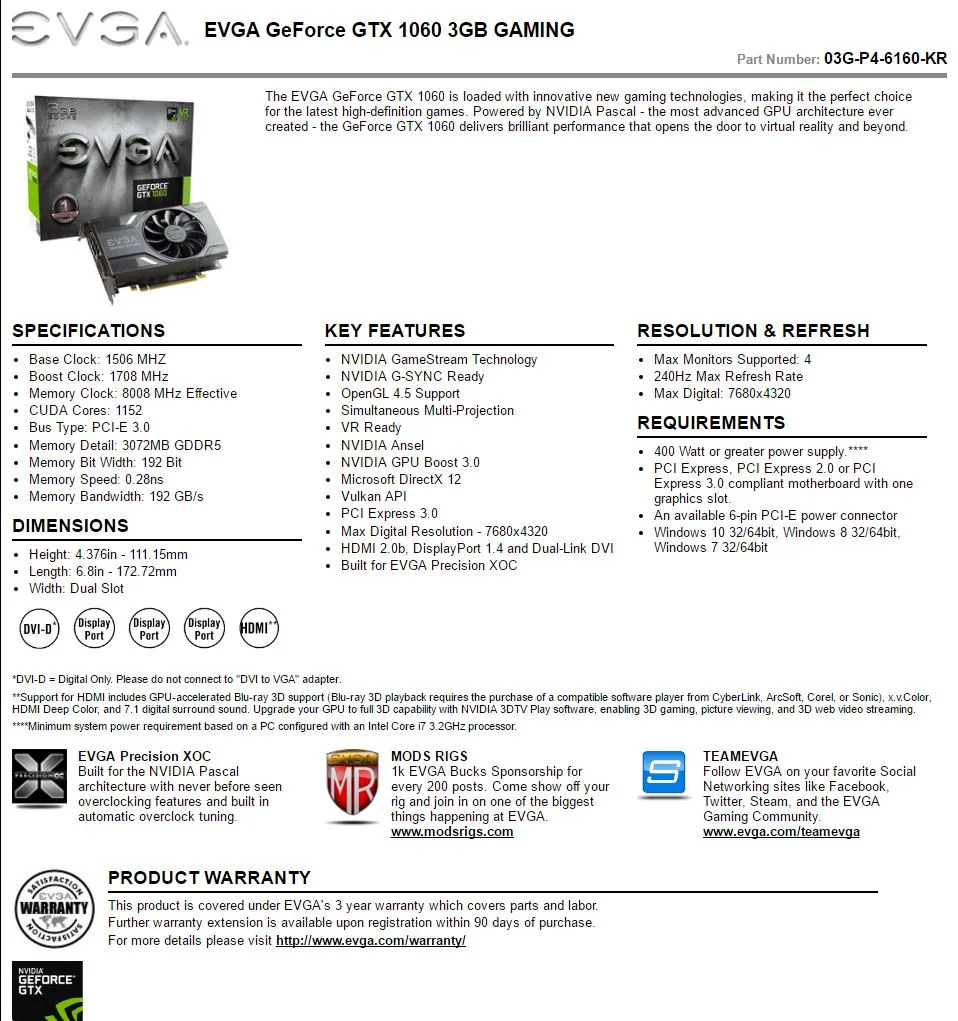



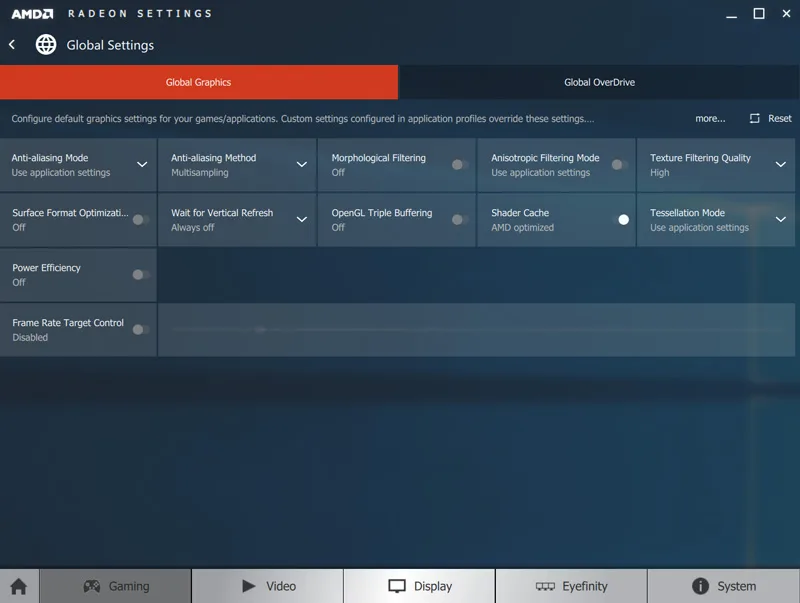
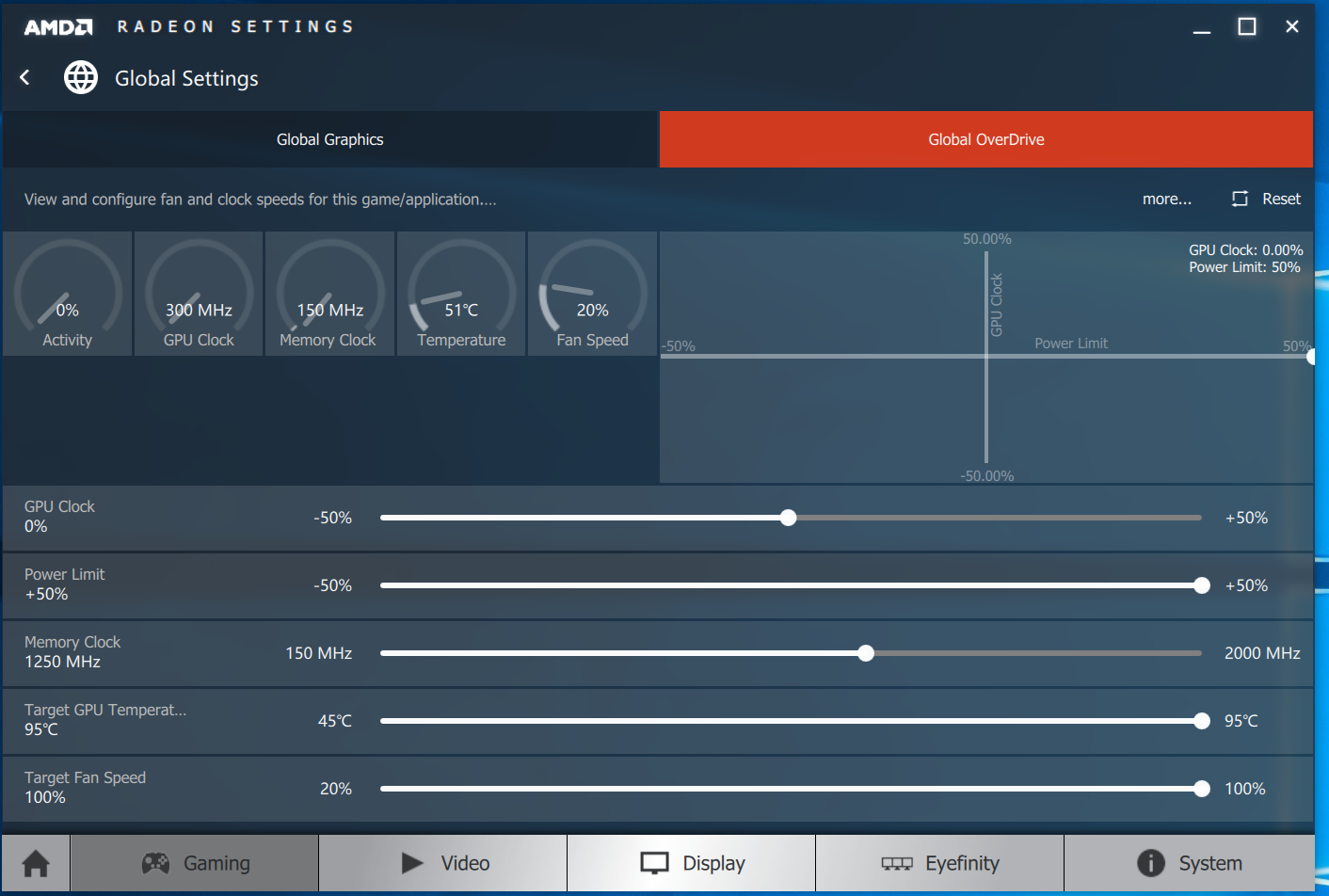
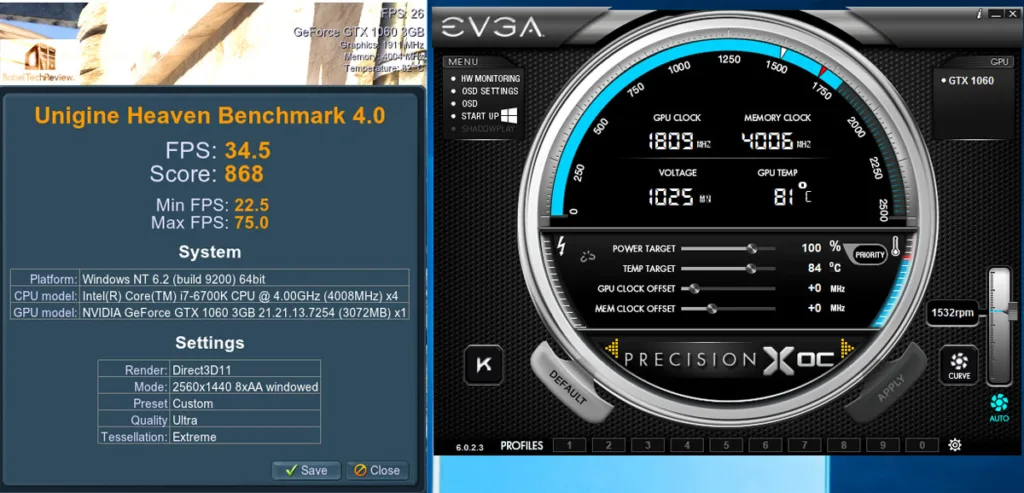
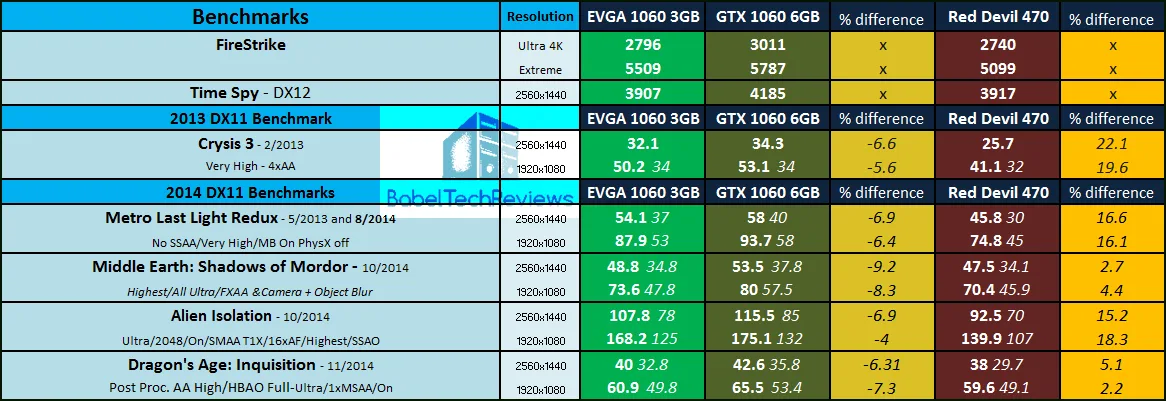




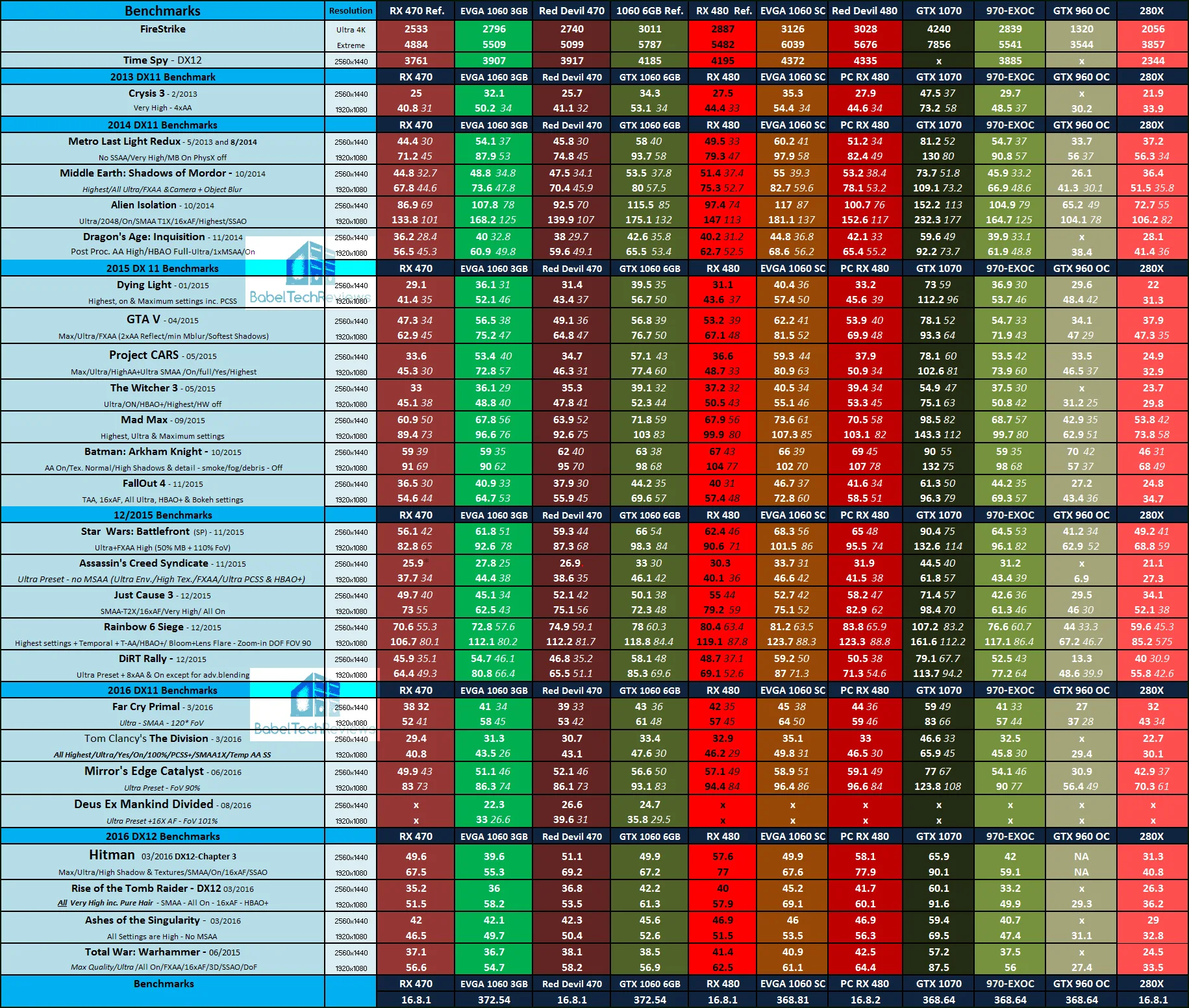
Comments are closed.